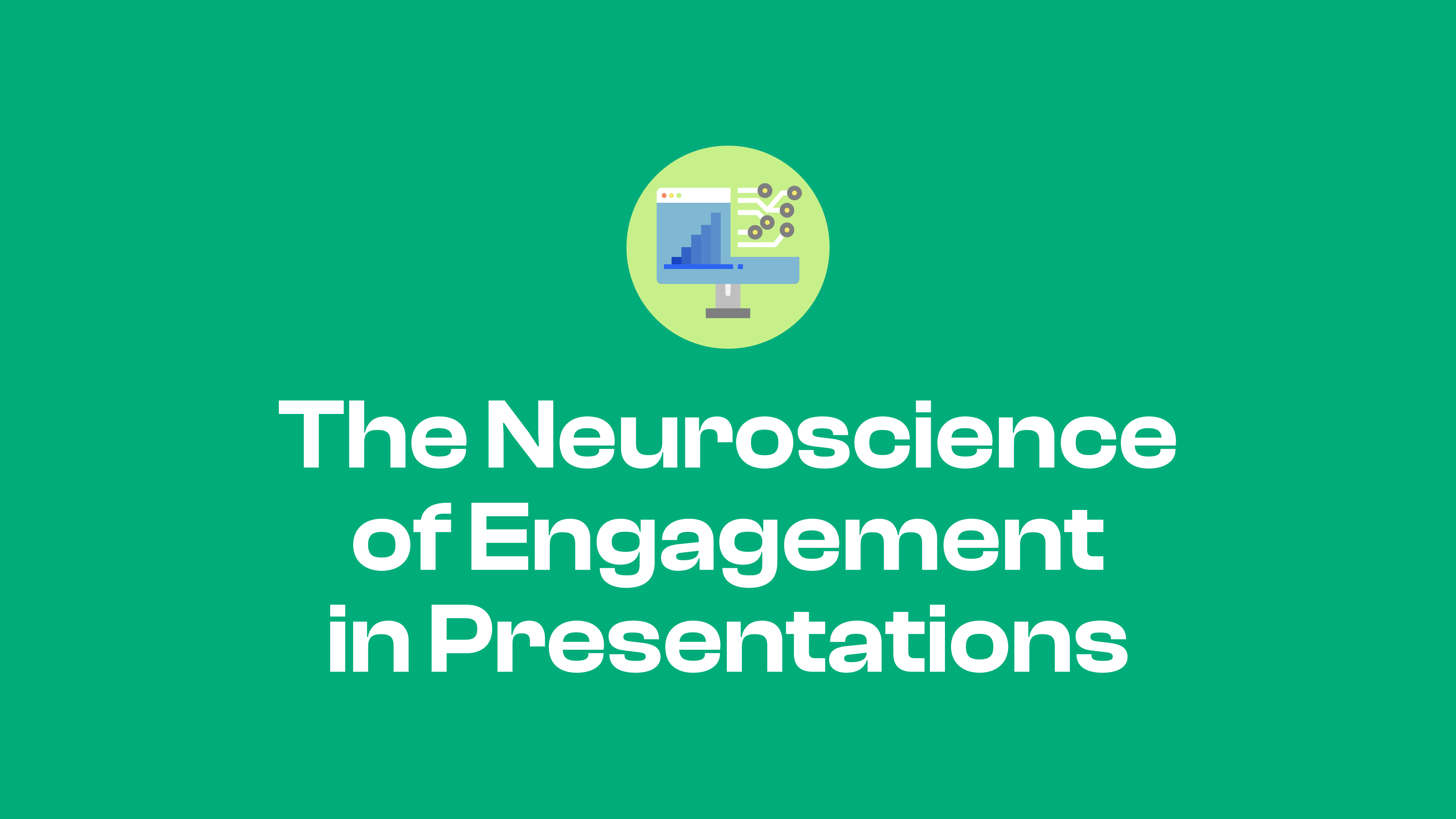Creating High-Impact Cover Slides
2 minutes

The moment a VC, prospect, or board member opens your pitch deck, the cover slide sets every expectation that follows. Nail it and you earn instant credibility; miss the mark and your audience may unconsciously discount the rest of your story. This deep‑dive walks through the why, what, and how of building modern, high‑impact cover slides—complete with 2025 design trends, layout formulas, and technical guardrails.
1. Why the Cover Slide Matters More Than Ever
First‑impression economics: Eye‑tracking studies show viewers form a quality judgment in <3 seconds. The title slide is the only frame guaranteed 100 % attention.
Signal‐to‐noise in VC inboxes: Partners often skim 50+ decks daily; a polished cover communicates operational excellence before they read a single metric.
Mobile‑first reality: Roughly 30 % of pitch decks are now opened first on phones, meaning your cover must work at 390 px wide.
2. Core Elements of an Effective Cover Slide
Element | Purpose | Best‑practice tips |
Company / Product Name | Anchor memory | 60–120 pt; hack: align baseline with Golden Ratio grid |
One‑line Value Prop | Spark curiosity | Keep ≤10 words; write in customer‑focused language |
Hero Visual | Create emotional connection | Full‑bleed image, abstract gradient, or 3‑D mock‑up |
Logo & Brand Mark | Reinforce identity | Position top‑left or bottom‑right; never center + wordmark |
Presenter Contact | Facilitate follow‑up | Email & phone in 9‑11 pt, or leave for back cover |
3. 2025 Design Trends Shaping Killer Covers
3.1 Bold Minimalist Typography
100‑pt+ wordmarks stretching edge‑to‑edge
Mono‑weight geometric sans fonts (e.g., Söhne, Inter Tight)
Subtle kinetic type reveals for digital decks (2‑sec MP4 loop <500 KB)
3.2 Dark‑Mode Elegance
Charcoal or near‑black backgrounds with neon accent strokes
Overprint technique: lighten photo shadows so imagery “floats” above black
3.3 Gradient & Duotone Overlays
Asymmetric gradients (teal → magenta) at 70 % opacity
Earth‑tone duotones for sustainability or deep‑tech narratives
3.4 3‑D & Isometric Hero Renders
Soft‑shadow product mock‑ups signal engineering sophistication
Depth of field blur behind UI layers to pull eye to app screen
3.5 AI‑Generated Concept Art
Rapidly produce future‑state visuals (factory of the future, virtual wardrobe) while staying on brand
Always up‑scale to 4K and run a noise‑reduction pass to avoid AI artifacts
4. Six Proven Layout Recipes (Copy–Paste Ready)
Recipe #1 — Full‑Bleed Hero
Background: high‑resolution product photo or market pain point illustration
Foreground: centered wordmark + tagline in white
Accent: 2 px keyline at footer in brand color
Recipe #2 — Split‑Screen Insight
Left 60 %: bold headline + value prop
Right 40 %: photo or animation loop
Use vertical gradient divider to guide the eye
Recipe #3 — Gradient Card
Dark gradient background
Centered translucent card (80 % opacity) containing logo + copy
Works well for AI or fintech verticals
…and three more: Overprint Silhouette, Isometric Roadmap, and Minimalist Center‑Stack.
5. Color Strategy—Beyond Brand Guidelines
High contrast always wins: Target 7:1 ratio for headline vs. background.
Reserve brightest hue for call‑to‑action (e.g., the “Download deck” QR code).
Control color temperature: Warm palettes (orange, coral) feel energetic; cool palettes (indigo, mint) feel trustworthy. Use temperature intentionally to match positioning.
6. Typography Hierarchy in Two Steps
Hero Size: 4× body‑text size (e.g., 104 pt headline, 26 pt subline).
Weight Contrast: Pair a heavy display face with book‑weight sans for legibility.
Optional advanced move: apply a 5 % optical kerning expansion on uppercase headlines to improve readability on large LED screens.
7. Imagery & Illustration Choices
Scenario | Best Visual | Rationale |
Deep‑tech, B2B SaaS | 3‑D SaaS dashboard mock‑up | Feels product‑centric and tangible |
Consumer lifestyle | Aspirational photo with empty space (copy overlay) | Suggests brand personality |
Climate or sustainability | Botanical texture over a pastel gradient | Conveys eco‑friendly ethos |
Frontier hardware | Wireframe or exploded 3‑D render | Demonstrates engineering rigor |
8. Motion & Interaction
Lottie JSON or MP4 (≤3 sec, ≤500 KB) to show app flow or sensor blinking.
Parallax scroll in web‑based decks (Pitch.com, Figma prototypes).
Cinematic reveal: fade‑in product silhouette during first sentence of the live pitch.
Rule of thumb: if the animation distracts from your one‑line value prop, cut it.
9. Accessibility & Inclusivity
Test color‑blind safety (blue–orange, purple–green) with simulators.
Ensure alt‑text is embedded when exporting to PDF for screen readers.
Minimum 24 pt body text for mobile consumption.
10. Technical Guardrails
Export Format | Pros | Watch‑outs |
Universally viewable, small size | Animations flatten—consider GIF loops | |
PowerPoint / Keynote | Easy live editing | Version conflicts, missing fonts |
Web link (Pitch, Canva, Figma) | Analytics + responsive | Requires internet; offline VCs may struggle |
File size target: <10 MB for PDF, <25 MB for PPTX with embedded video. Compress JPEGs to ≤200 KB, PNGs only when transparency essential.
11. Personalisation & AB‑Testing
Investor‑specific covers: swap logo, reference portfolio company, or tweak tagline.
Dynamic QR codes: unique links per recipient → see who actually opened the deck.
A/B variants: Test dark vs. light covers with warm intros—track meeting‑booking rates.
12. Workflow: From Blank Slide to Pixel‑Perfect Hero
Discovery – Clarify goal, audience context, and brand mood board.
Wireframe – Sketch 2‑3 layout options on paper or FigJam.
Design Sprint (90 min) – Drop content into chosen layout; apply brand palette and typography hierarchy.
Feedback Loop – Collect async comments; iterate twice.
Polish – Optimize images, embed fonts, accessibility checks.
Export & QA – Test on laptop, phone, 4K projector.
Pro tip: create a “cover slide component” in Figma with auto‑layout so future decks inherit updates instantly.
13. Final 15‑Point Checklist
Slide opens in <1 s on 4G?
Logo crisp at 200 % zoom?
Headline reads at arm’s length?
Tagline ≤10 words and customer‑focused?
Visual evokes solution or aspiration?
Color contrast ≥7:1?
Font files embedded?
File size under 10 MB?
Animations loop <3 s?
Mobile readability passes?
Alt‑text present?
QR code tested?
Brand palette consistent?
Layout grid aligned?
Slide sparks curiosity to continue?
Parting Thought
A cover slide is your handshake in pixels—make it firm, clear, and memorable. By combining a sharp narrative hook with the 2025 design trends outlined above, you’ll command attention from the very first frame. Design is not window dressing; it’s conversion architecture. So open your next deck with intent, and watch how quickly the rest of the story falls into place.
Need expert eyes on your title slide? The team at Dots Presentations has crafted hundreds of high‑impact covers for seed to Series C startups. Reach out and we’ll turn your opening frame into an irresistible invitation to invest.
Share our post



